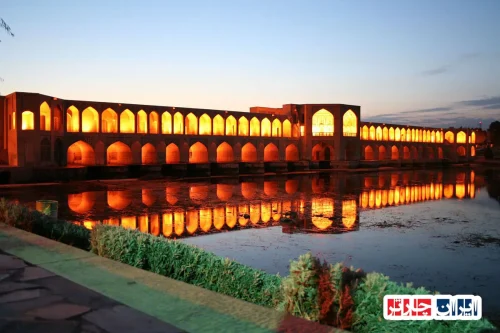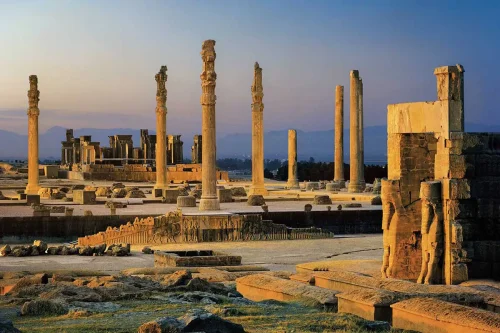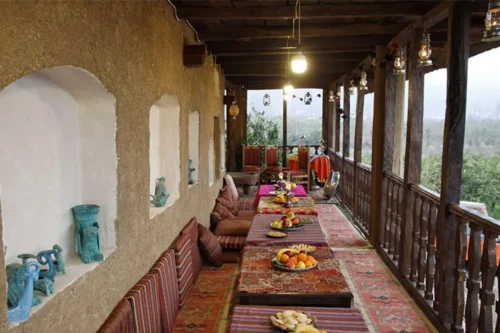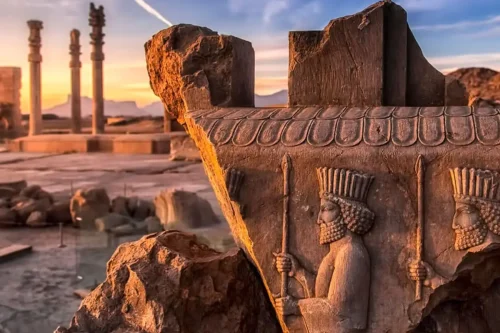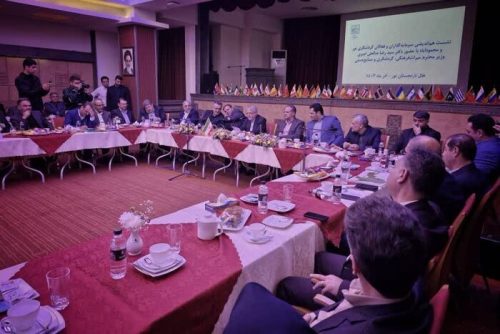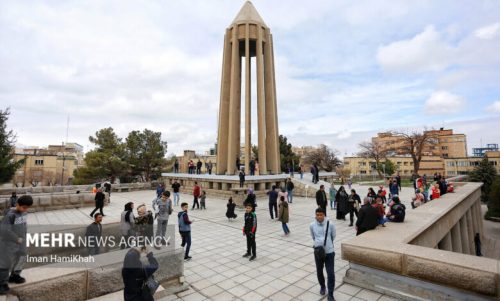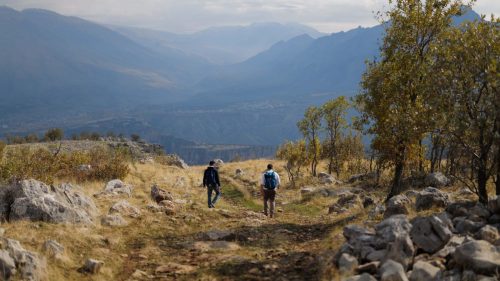News Source : https://www.mehrnews.com/news/6264722/%D8%B3%D8%A7%D8%B2%D9%85%D8%A7%D9%86-%D8%A7%D9%85%D9%88%D8%B1-%D8%A7%D8%B1%D8%A7%D8%B6%DB%8C-%D8%A7%D8%B2-%D8%B3%D8%A7%D9%84-%DB%B1%DB%B3%DB%B9%DB%B4-%D8%AA%D8%A7%DA%A9%D9%86%D9%88%D9%86-%DB%B8%DB%B8%DB%B0-%D8%B7%D8%B1%D8%AD-%DA%AF%D8%B1%D8%AF%D8%B4%DA%AF%D8%B1%DB%8C-%D8%B5%D8%A7%D8%AF%D8%B1-%DA%A9%D8%B1%D8%AF
The Land Affairs Organization has issued 880 tourism plans since 2015
The Land Affairs Organization has issued 880 tourism plans since 2015, playing a crucial role in developing the country’s tourism sector. These plans have created new opportunities to attract both domestic and foreign tourists. They are recognized as key factors in increasing the country’s non-oil revenue. These programs have not only aided in developing tourism infrastructure but have also prioritized the conservation and maintenance of agricultural lands. In collaboration with the Ministry of Cultural Heritage, Tourism, and Handicrafts, the Land Affairs Organization has created an environment conducive to economic and social growth.
The plans aim to enhance public welfare and create jobs in various regions. By smartly leveraging natural resources, the Land Affairs Organization has implemented sustainable development. Additionally, these plans are considered indicators of success in the country’s development policies. Out of these 880 plans, three plans, in particular, have shown high potential in attracting tourists.
The Land Affairs Organization continues to further develop this sector. These efforts demonstrate the organization’s commitment to enhancing tourism and preserving the country’s agricultural lands. The successful implementation of these plans has made significant strides in improving the nation’s economic and social conditions.
For more information or to book tickets, contact Iran Charter at 021 91091190 or email info@irancharter.ir.
The Role of the Land Affairs Organization in Issuing Tourism Plans Since 2015
Since 2015, the Land Affairs Organization has issued 880 tourism plans, demonstrating the organization’s commitment to sustainable tourism development and optimizing the use of agricultural land resources. These plans aim to enhance tourism infrastructure and attract domestic and foreign investments in the tourism sector.
The Impact of 880 Tourism Plans Issued by the Land Affairs Organization on the National Economy
The issuance of 880 tourism plans by the Land Affairs Organization since 2015 has played a significant role in increasing the country’s non-oil revenues. These plans have been instrumental in creating job opportunities in various regions, greatly contributing to reducing unemployment and fostering economic development in rural areas.
Collaboration of the Land Affairs Organization with the Ministry of Cultural Heritage and Tourism in Implementing 880 Tourism Plans
The Land Affairs Organization has closely collaborated with the Ministry of Cultural Heritage and Tourism to implement 880 tourism plans nationwide. This cooperation has helped preserve and enhance the country’s cultural and natural heritage, creating a suitable environment for the development of tourism events.
Preservation of Agricultural Lands in Tourism Projects by the Land Affairs Organization
In issuing 880 tourism plans, the Land Affairs Organization has placed great emphasis on the preservation of agricultural lands. By selecting suitable lands and preventing the destruction of fertile lands, the organization has managed to balance tourism development with the preservation of the country’s food resources.
Opportunities Created from the Issuance of 880 Tourism Plans by the Land Affairs Organization
The issuance of 880 tourism plans by the Land Affairs Organization has created new opportunities to attract domestic and foreign tourists. These plans, by providing diverse services and amenities, have created new attractions for tourists, offering a unique experience of Iran’s nature and culture.
Physical Progress of the 880 Tourism Plans Issued by the Land Affairs Organization
According to recent reports, the 880 tourism plans issued by the Land Affairs Organization have averaged 62% physical progress. This progress indicates the organization’s continuous efforts to execute plans accurately and timely, realizing tourism development goals.
Land Affairs Organization’s Strategies for Sustainable Development Through Tourism
The Land Affairs Organization is committed to sustainable tourism development in the country through the adoption of modern and innovative strategies. These strategies include the intelligent use of natural resources, improving tourism service quality, and creating the necessary infrastructure to attract tourists.
Challenges Faced by the Land Affairs Organization in Issuing Tourism Plans
The Land Affairs Organization has faced numerous challenges in the process of issuing 880 tourism plans. These challenges include the need for coordination between various agencies, financial issues, and securing necessary resources for implementing the plans, as well as combating environmental degradation.
The Future of Tourism in Iran: The Perspective of the Land Affairs Organization
With precise planning and a focus on sustainable tourism development, the Land Affairs Organization envisions a bright future for tourism in Iran. With ongoing efforts and the issuance of new plans, tourism is expected to become a major pillar of the country’s economy, creating more opportunities for growth and economic advancement.
FAQ
- How many tourism plans has the Land Affairs Organization issued since 2015?
- Since 2015, the Land Affairs Organization has issued 880 tourism and ecotourism plans at the request of the Ministry of Cultural Heritage and Tourism.
- What is the total area of agricultural land in the country, and how much of it is fertile?
- There are approximately 18 million hectares of agricultural land in the country, with only about 5 million hectares being fertile and classified as class one and two.
- How is the change of use of agricultural land regulated according to the Land Use Preservation Law?
- According to Article (1) of the Land Use Preservation Law, changing the use of agricultural land is prohibited, except in necessary cases determined by the commission’s clause (1) of Article (1).
- How many land use change permits does the Land Affairs Organization issue annually and for what purposes?
- The Land Affairs Organization annually issues approximately 10,000 land use change permits over an area exceeding 5,000 hectares for various projects.
- What percentage of the issued tourism plans have had physical progress?
- Studies show that these plans have had an average of only 62% physical progress.
- Why is preserving agricultural lands crucial for food security?
- With only about 5 million hectares of fertile agricultural land available, ensuring food security is essential and requires coordination and synergy among all executive bodies of the country.
- What types of plans have had more demand?
- Tourism and ecotourism plans have been in higher demand.
- What measures are taken to prevent the destruction of agricultural lands?
- By thorough capacity assessment, needs assessment, and eligibility assessment by the responsible authorities, services are facilitated and expedited for applicants to prevent damage to agricultural lands.
- How are agricultural lands of grades 1 to 4 protected?
- Agricultural lands of grades 1 to 4 should not fall victim to other plans, and tourism activities should be directed towards lands of grades 5 and 6.
- What is the request of the Ministry of Cultural Heritage, Tourism, and Handicrafts?
- The Ministry requests that all tourism activities and facilities be exempt from land use change fees and that the construction restrictions in grade 1 and 2 lands be removed.
- How does the payment of fees help in changing the use of agricultural land?
- The payment of fees acts as a deterrent in changing the use of agricultural lands, creating a barrier for individuals intending to change the use.
- What are the differences between domestic tourism and tourism in other countries like Turkey?
- In other countries like Turkey, tourism is conducted in a manner where the infrastructure is built in areas that do not harm agricultural lands, especially fertile ones.
- What obligations do the cabinet’s decrees impose on issuing bodies?
- According to the cabinet’s decrees, issuing bodies are required to visit project sites twice a year promptly to ensure their precise and timely implementation.
- What problems arise from the lack of timely supervision of plan implementation?
- Without timely supervision, some plans may divert towards villa construction and other unrelated profiteering activities or remain unfinished, leading to public rights and wealth being compromised.
- How can it be ensured that agricultural lands of grades 1 and 2 are not harmed?
- By diverting tourism activities to lands of grades 5 and 6 and conducting territorial planning studies and precise positioning by the Ministry of Cultural Heritage, Tourism, and Handicrafts, harm to grades 1 and 2 lands can be prevented.
- What measures are taken to facilitate and expedite the provision of services to applicants?
- With thorough capacity assessment, needs assessment, and eligibility assessment by the responsible authorities, services to applicants are facilitated and expedited.


